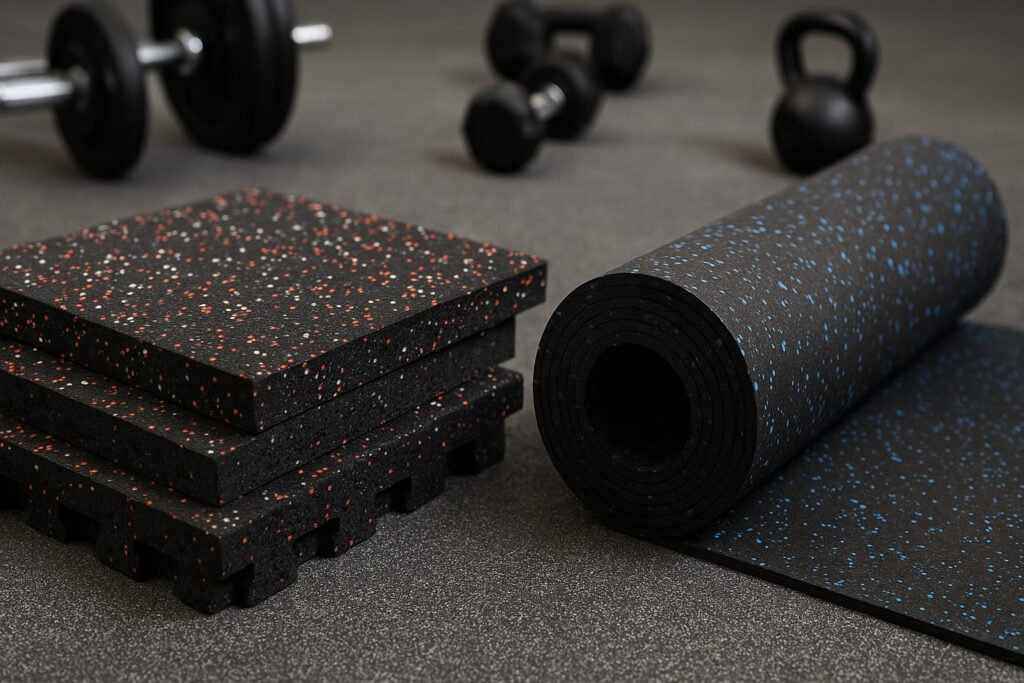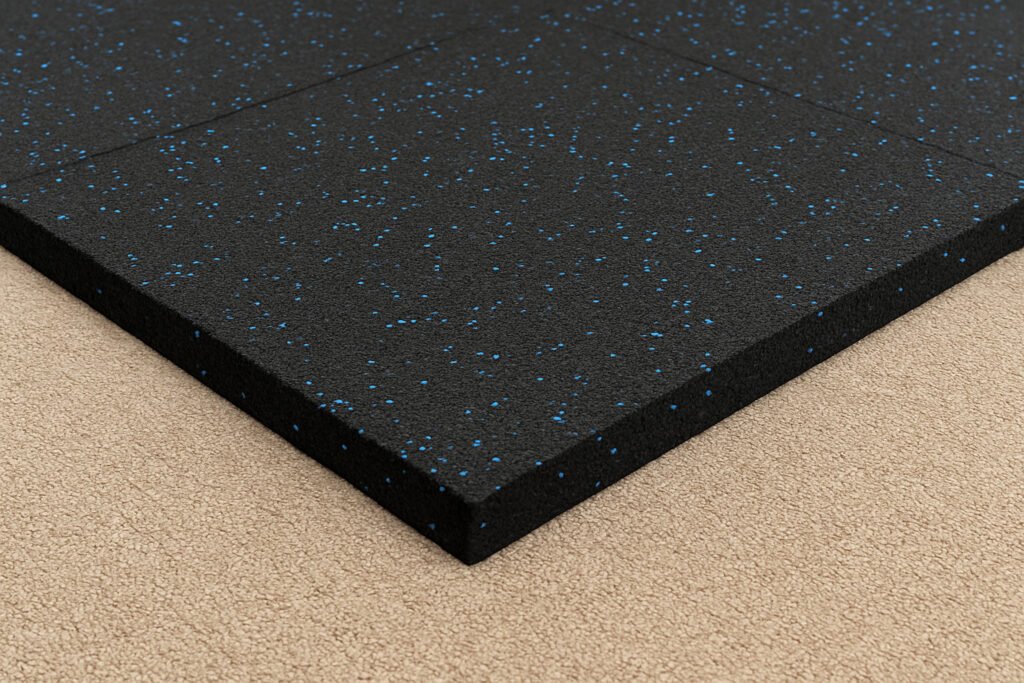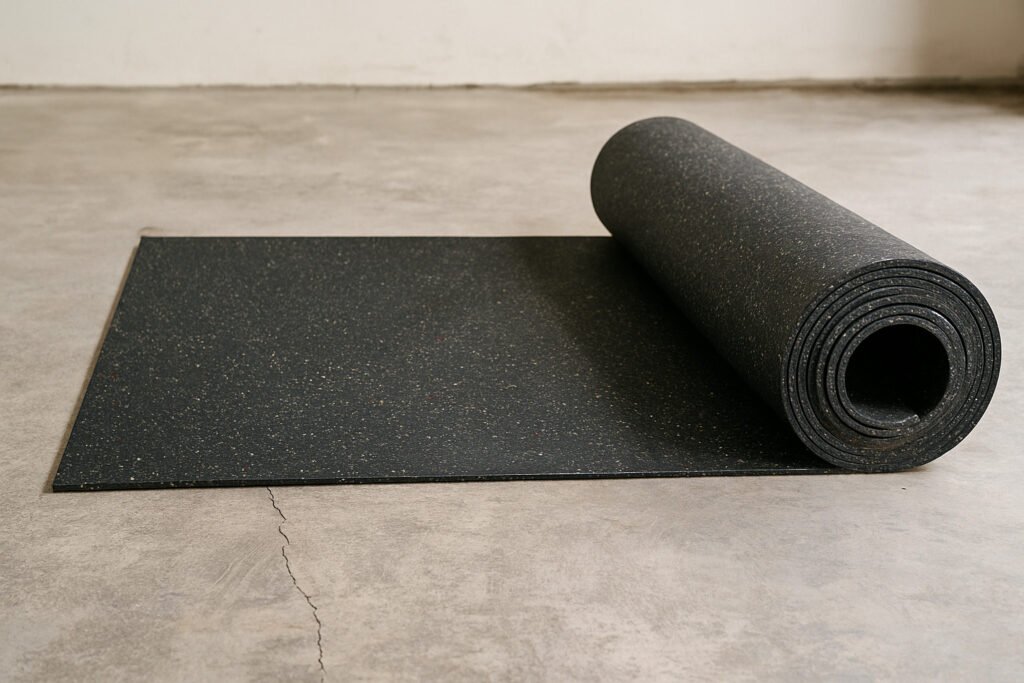Gym Rubber Tiles vs. Rolls: Which One’s Best for You?
Choosing the wrong gym flooring can lead to safety issues, wasted money, and frustrated clients. Don’t guess—let’s break down tiles vs. rolls to find your perfect fit.
Gym rubber tiles are better for weight zones, while rubber rolls work best in cardio, yoga, and office areas due to their seamless and flexible coverage.

If you’re planning a gym, flooring is one of the biggest decisions you’ll make. The type of floor you choose affects safety, noise, maintenance, and even the look of your space. I’ve helped clients from Australia to Canada make this choice, and I always guide them through one key question—tiles or rolls? Here’s how you decide.
Are gym rubber tiles better for weightlifting areas?
Slamming weights on the wrong floor can damage the ground and your equipment—and hurt your members too.
Rubber tiles are thicker, more shock-absorbing, and perfect for weightlifting and CrossFit zones.

Rubber tiles are made for impact. At Lanhefloor, we offer tiny granule rubber tiles, composite rubber tiles, and puzzle rubber tiles. These are all made from durable SBR rubber, with options to add EPDM color dots for visual zoning or branding. Our tile thickness ranges from 15mm to 50mm—ideal for serious lifting zones.
Key Comparisons of Rubber Tile Types
| Product Type | Thickness | Ideal Use Case | Shock Absorption | Surface Look |
|---|---|---|---|---|
| Tiny Granule Rubber Tile | 15mm–50mm | Weight zones | ★★★★☆ | Matte granular |
| Composite Rubber Tile | 15mm–50mm | Strength & high-end gyms | ★★★★★ | Smooth & premium |
| Puzzle Rubber Tile | 10mm–25mm | Functional & home gyms | ★★★★☆ | Interlocked pattern |
Tiles give you heavy-duty protection and design flexibility. Learn more at our gym rubber tile category.
Are rubber rolls better for yoga and cardio areas?
Laying thousands of tiles takes time and money. Is there a faster way to cover large gym areas?
Rubber rolls provide seamless coverage, ideal for large non-weight zones like yoga rooms and cardio areas.

Rubber rolls are efficient. They’re easy to install and maintain, and they give a clean, modern look. At Lanhefloor, we offer rolls from 3mm to 12mm thick, in widths of 1–1.25 meters, and lengths up to 15 meters. Perfect for yoga, walking paths, stretching areas, or reception zones.
Explore the full range here: rubber roll products
When to Choose Rubber Rolls
| Roll Feature | Benefit |
|---|---|
| Seamless look | No visible lines or edges |
| Fast installation | Cover 100m² in hours |
| Comfortable underfoot | Great for yoga, cardio, and reception |
| Cost-effective | Ideal for large surface coverage |
If you’re designing smooth transitions between gym spaces, rolls are your go-to option.
Is installation easier with tiles or rolls?
If you’re opening a new gym, you’re likely under pressure. So, which flooring option saves you the most time?
Tiles are easy to install in small spaces or with interlocking edges. Rolls are better for quick large-area installs.
Rubber tiles—especially interlocking puzzle types—don’t require glue. They can be installed quickly and are easy to move or replace. Rolls need glue or tape but cover more area faster. Each option has a place depending on your layout and team.
Installation & Maintenance Overview
| Type | Installation Method | Maintenance | Ideal For |
|---|---|---|---|
| Rubber Tile | Manual layout / Glue | Easy | Weight zones, small gyms |
| Puzzle Tile | No glue, modular | Very easy | Home gyms, PT areas |
| Rubber Roll | Tape or glue-down | Easy | Yoga, cardio, large gyms |
See our project gallery for real installs with both systems.
Does one type last longer than the other?
Worn-out flooring can ruin your gym’s image and cost you big. So, which option gives you better value over time?
Rubber tiles usually last longer under heavy impact, while rolls perform well with moderate use.
Rubber tiles are thicker and designed for impact resistance, making them ideal for weight areas. Rolls work great in non-impact zones. Both products from Lanhefloor meet EN1177 and CE standards for durability and safety.
Need something more weather-resistant? For outdoor gyms, playgrounds, or walkways, check out our outdoor rubber flooring solutions.
We also manufacture EPDM granules for poured-in-place playground and sports flooring.
Durability Factors to Consider
| Factor | Rubber Tile | Rubber Roll |
|---|---|---|
| Impact zones | ★★★★★ | ★★★☆☆ |
| General use | ★★★★☆ | ★★★★☆ |
| Surface wear | Excellent | Good |
| Maintenance | Simple | Simple |
Pick the one that suits your gym’s intensity and traffic.
Conclusion
Rubber tiles are better for impact and durability. Rubber rolls are better for speed and surface coverage. Choose based on your gym’s layout and training needs.
Explore all flooring solutions at Lanhefloor.com
